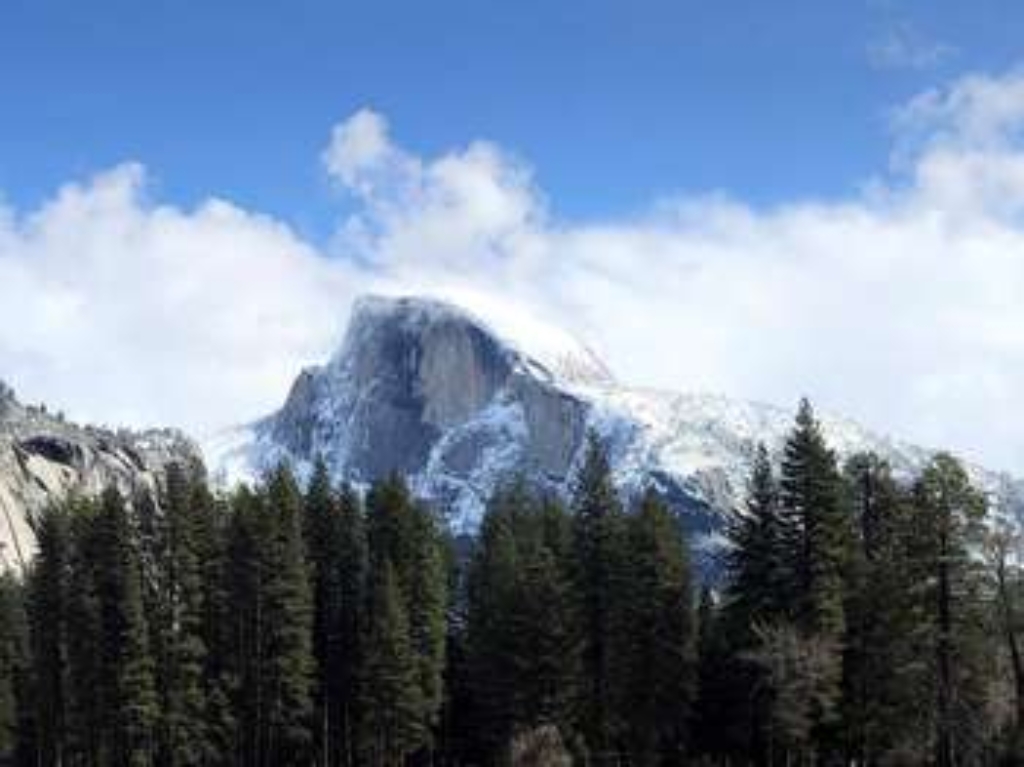
Looking east toward the head of Yosemite Valley, you can see Half Dome, a massive rock formation with a rounded summit and a sheer face that looks like it's been cut in half. Half Dome is one of the most well-known features in Yosemite. To understand how this impressive feature formed, we have to journey back in time again, this time about one hundred million years ago, when the granitic bedrock of Yosemite was forming.
Yosemite looked very different one hundred million years ago. Towering volcanoes existed here then making up a vast mountain chain similar to the modern Andes Mountains in South America. Deep below the volcanoes, the slipping of one tectonic plate under another created pools of hot, fluid rock called magma. Some of the magma rose to the surface and erupted from the volcanoes, but most of it cooled very slowly deep below the surface, forming the large, interlocking crystals that make up the granite of Yosemite. You may be wondering how rocks that formed miles below the surface are now exposed on the surface. Over tens of millions of years, the towering volcanoes were slowly eroded away, removing a great weight that caused the granitic rocks to rise, eventually revealing them surface. The material eroded from the volcanoes was transported west to the Central Valley of California, where the sediment is miles thick - a hidden but impressive testament to the power of erosion.
After the granite of Half Dome was revealed, erosional forces set upon sculpting it further. Chief among these erosional forces were glaciers, which repeatedly scraped along both sides of Half Dome, steepening the slopes. A large vertical fracture in the granite formed a weakness that glaciers could exploit, leading to the sheer face of Half Dome. The summit of Half Dome was never overtopped by glaciers, so its rounded shape results from a different kind of erosion called exfoliation. Exfoliation is the process by which slabs of rock break and peel away along curving parallel fractures similar to the skins of an onion. On the sheer face of Half Dome, exfoliation causes rockfalls that occur every few years.
Please follow the path to your left toward the Merced River to find the next stop. As you walk to the next stop, think back to the sign we saw at the beginning and recall that image of Yosemite Valley underwater. How does that image contrast with the Merced River that you see today?
Is there something we missed for this itinerary?
Itineraries across USA


















































